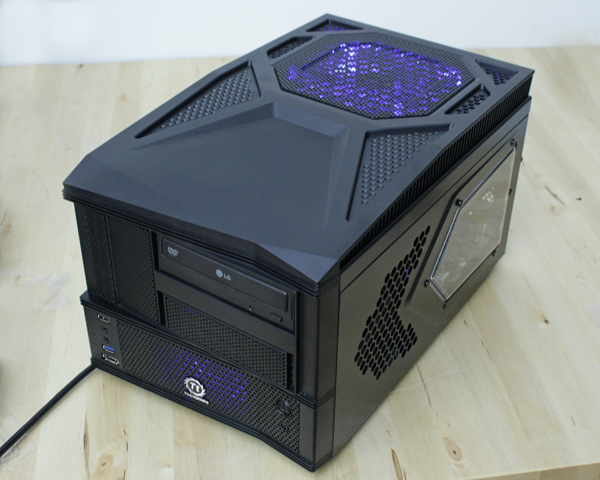

Review: In-case airflow and cooling are pretty good
It’s no secret that Thermaltake is quite proud of its Armor 30 case and today we’ll find out why. As the name suggests, the Armor A30 belongs to the Armor series, notable for sharp corners and sturdy chassis. However, you could just as well class the Armor A30 among LANBOX series, which is quite popular with gamers who are often on the move. The Armor series previously held a few different mid-tower and high-tower cases, but Thermaltake heard the customers’ pleas for smaller and more mobile small form-factor computer cases. Thus, the Armor A30 was born.
Thermaltake is no stranger on the market and it’s famous for nicely designed and functional cases, although it’s no stranger to special editions such as the Level 10.
The Armor 30 will easily hold graphics cards up to 350mm, meaning that it is compatible with all the current crop of graphics cards, including the Radeon HD 6990. The Armor A30 will take micro-ATX and mini-ITX motherboards with four expansion slots, whereas maximum CPU height is limited to 90mm. Thanks to the design with a few fans and plenty of outlets, the innards are well cooled.
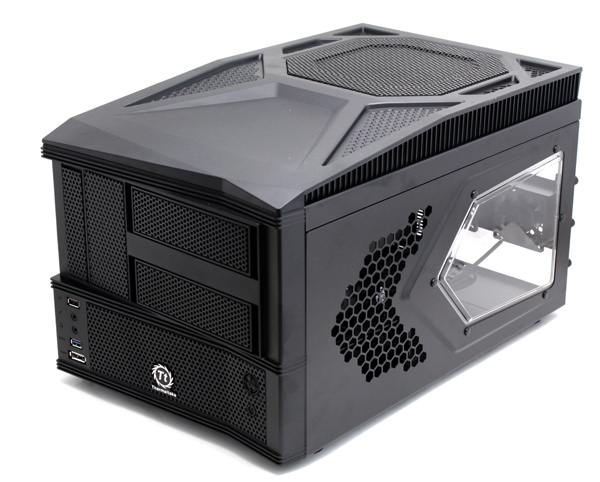
The Armor A30 looks very solid and compact, much like a small tank. However, you can disassemble it in mere moments and gain easy access to each and every component.
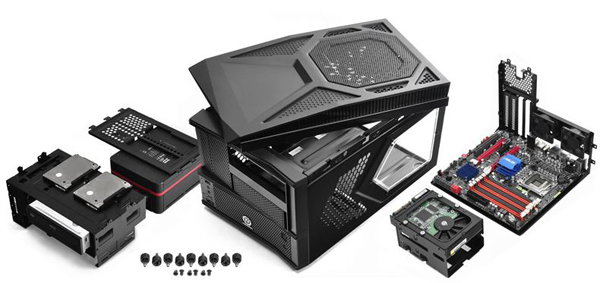
Packaging is pretty nice and informative. The sketches are clear and reveal many details. The packaging is tough enough to survive normal transport.
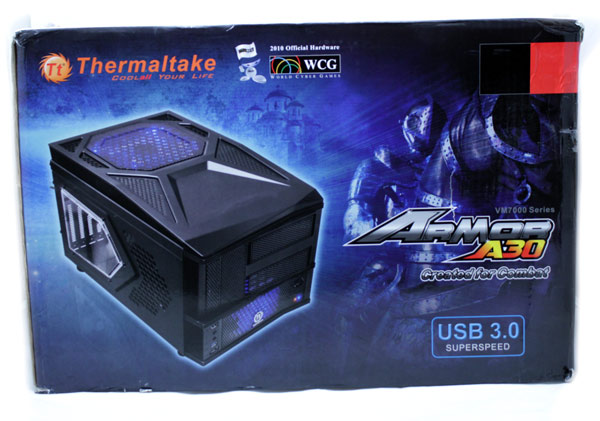
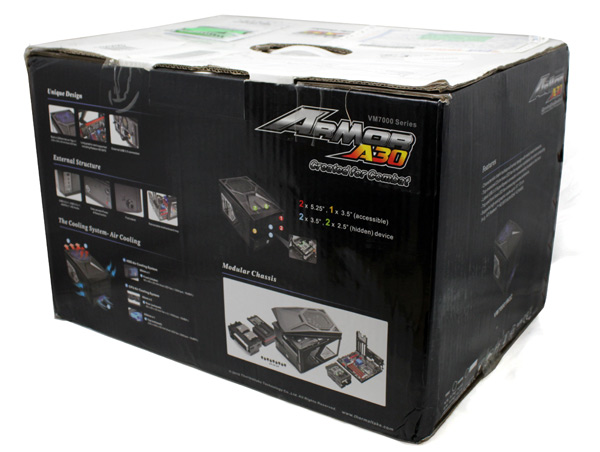
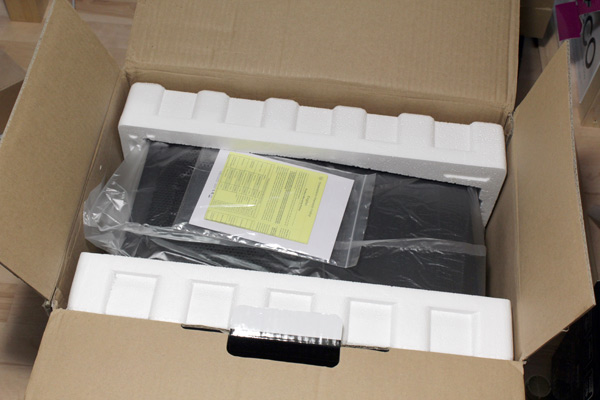
Apart from the quite graphic user’s manual, you’ll get all the screws you need. There are also two plastic brackets that should enable for mounting of 2.5’’ driver. We must compliment Thermaltake on including reusable cable ties – a nice touch indeed.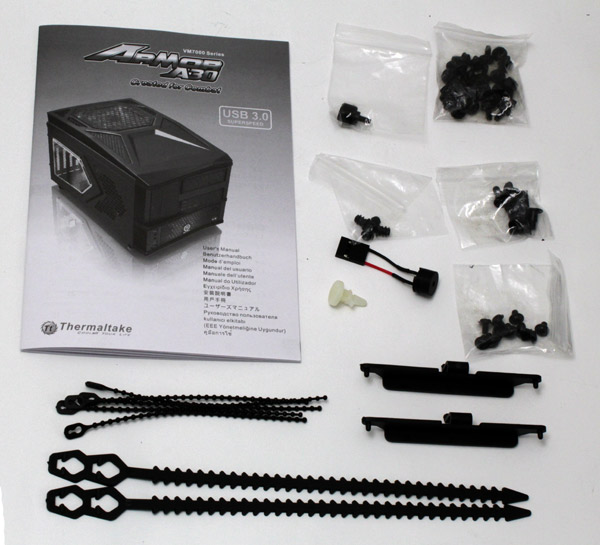
Both of the Armor A30’s sides are identical. Since both side panels come with windows, it’s easy to see the components inside.

The windows are protected with a plastic cover both inside and outside. The sides also feature mesh grill air outlets.

The Armor A30 is very sturdy and is mostly made of steel. There are some mesh grill surfaces but the weight of 6.7 kilograms says enough. Although it’s classified as small-form-factor case, the Armor A30 is more massive than other small-form factor cases. It measures 266 x 291 x 456mm.
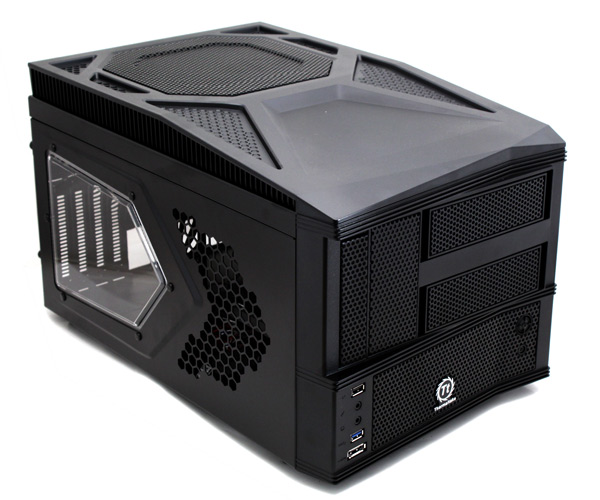
The top panel can be removed, which you’ll have to do when putting components in. It holds a large 230mm blue LED fan (230 x 230 x 20 mm, 800rpm, 15dBA).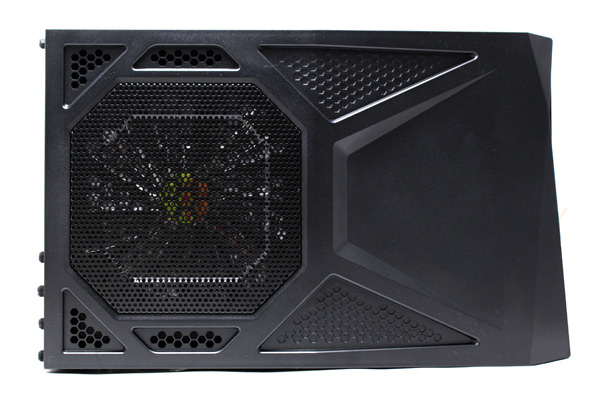
The front panel holds another blue LED fan (90 x 90 x 25 mm, 1200rpm, 16dBA).

Apart from the two aforementioned fans, the Armor A30 has another two 60mm fans on the rear panel (60 x 60 x 25 mm, 1500rpm,18dBA). The following pictures show the airflow inside the Armor A30.
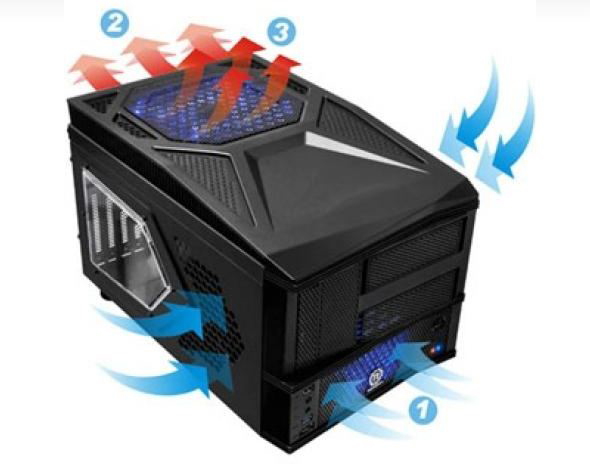
The top right part of the front panel has space for two external 5.25’’ optical drives. Beneath the mesh grill, you’ll find filters. You’ll find a 3.5’’ drive spot to the left, which is mounted vertically.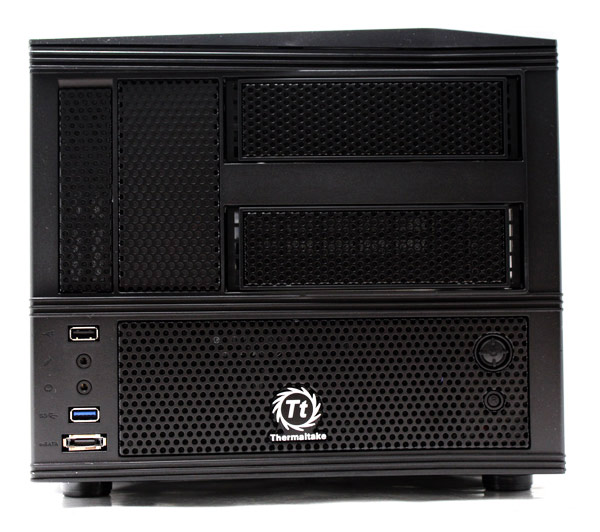
All the connectors are in the bottom left corner whereas Power and Reset keys are on the right side of the front panel. Apart from the audio ins/outs, you’ll find one eSATA, one USB 2.0 and one USB 3.0 port.
The rear panel has room for a standard ATX PSU with two 60mm fans below. Although we expected the fans to be loud, they were quite quiet. The Armor A30 will take four expansion cards. You’ll find another opening on the back, which is used to route USB 3.0 cables towards the I/O panel with a USB 3.0 port.
The Armor A30 has four rubber feet and has no air outlets/inlets below.
Removing the top panel allows access to components inside. The top panel holds a 230mm fan (800rpm, 15dBA), which connects via Molex.
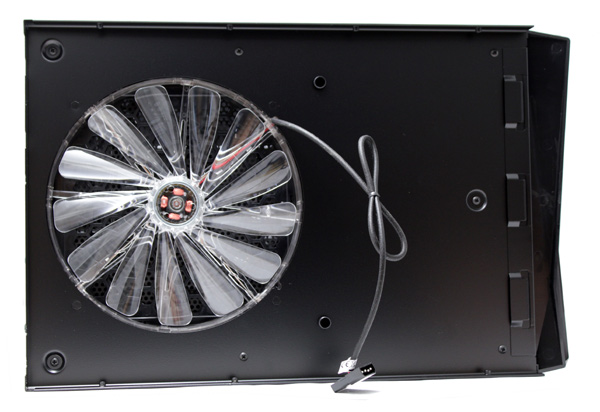
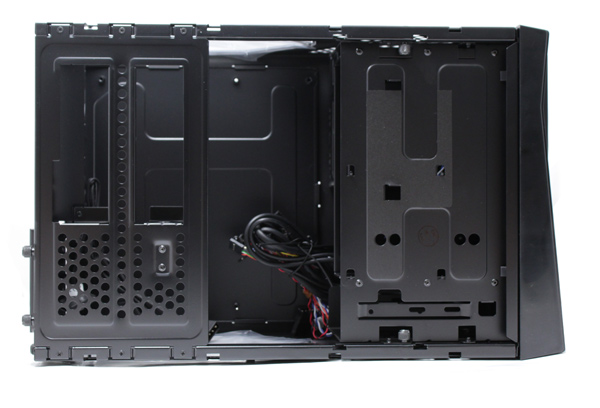

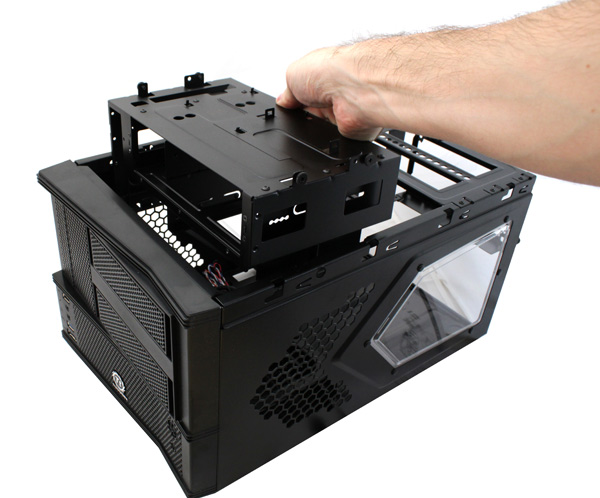
Apart from the two 5.25’’ and one 3.5’’ drive, the console will take another two 2.5’’ drives, thanks to the included plastic brackets.

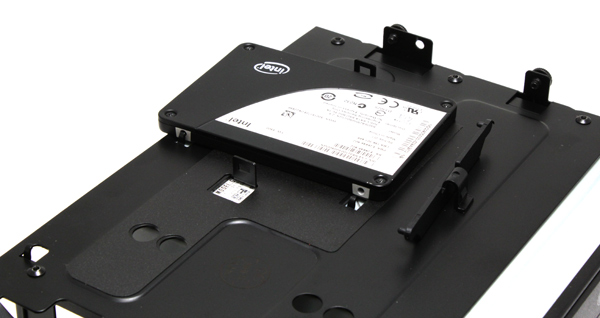
After removing the front panel, you can see the connectors, fans and the standard status LEDs.
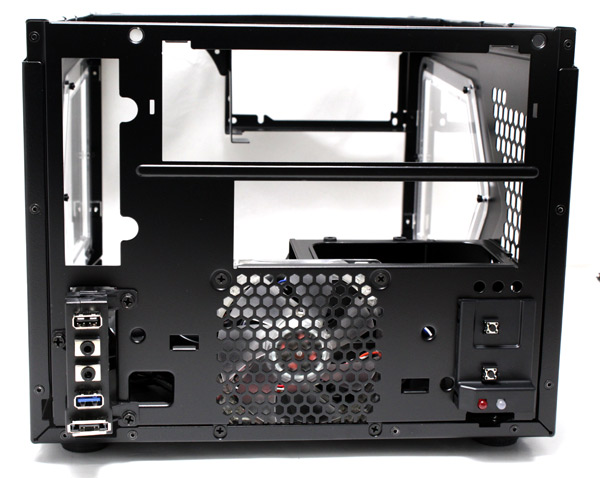
Standard 3.5’’ drives are mounted in a separate console attached to the bottom of the case. In order to access it, you’ll have to remove the 5.25’’ console first.
The smaller console will take two 3.5’’ drives, where rubber grommets prevent vibration and resulting noise.
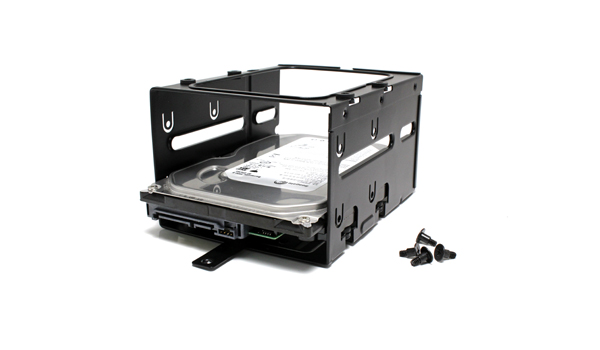
The motherboard tray can be removed, which will be a godsend for many users. Namely, it makes mounting motherboards, CPU coolers and expansion cards easy.
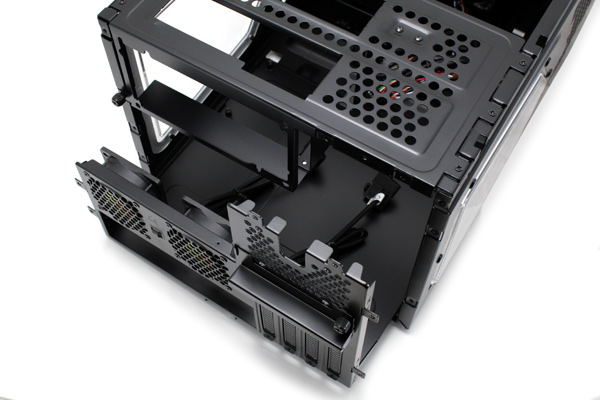
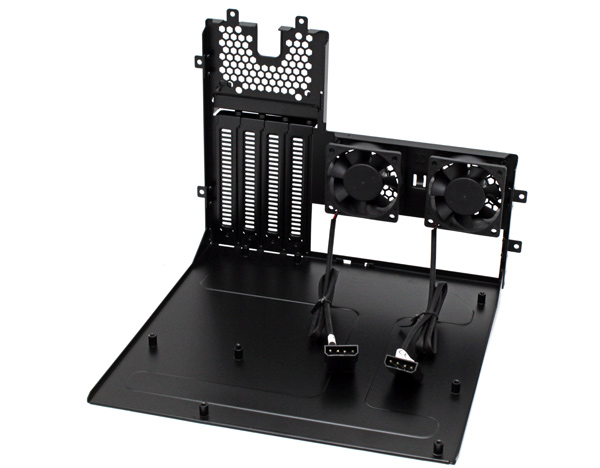
The ATX PSU is mounted in a cage that’s above the motherboard, which explains why CPU coolers must be less than 90mm high. We recommend using a modular PSU due to limited space inside.
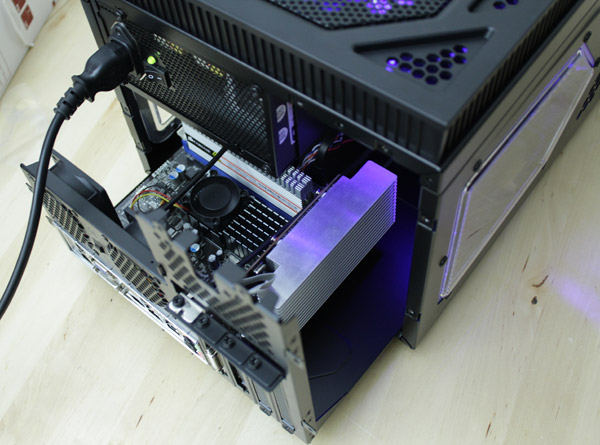
The Armor A30 will take the longest of graphics cards. However, you should mind the motherboard design because dual slot cards such as Radeon HD 6970 can only fit if they’re placed in the first expansion slot.
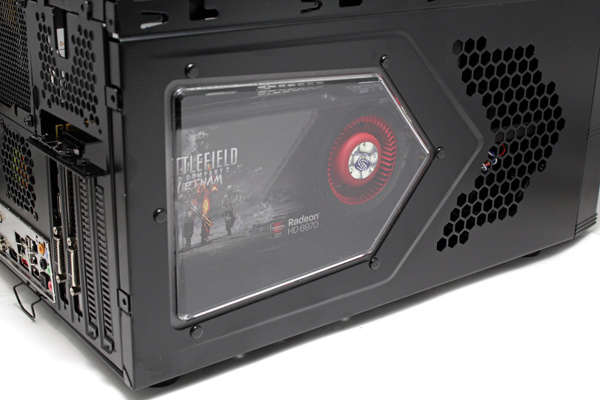
The Armor A30 was easy to fill up with components but cable management was a bit difficult. However, Thermaltake’s cable ties ended up being a godsend and we managed to finish the job quickly.
Modular parts of the case made our life much easier. Once all the consoles are removed from the case, there is almost nothing left inside.
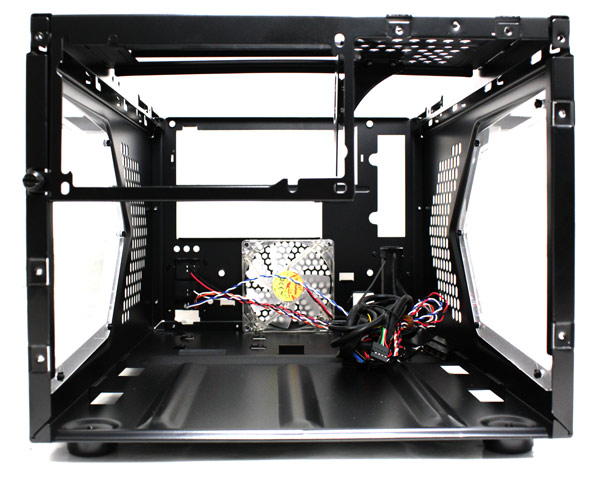
Combination of a large 230mm fan with three smaller fans and additional outlets/inlets yielded quite good results. Namely, the Armor A30 is almost inaudible yet remains very efficient in cooling.
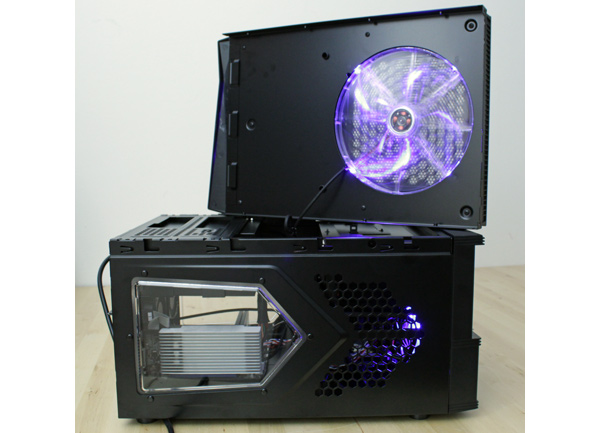
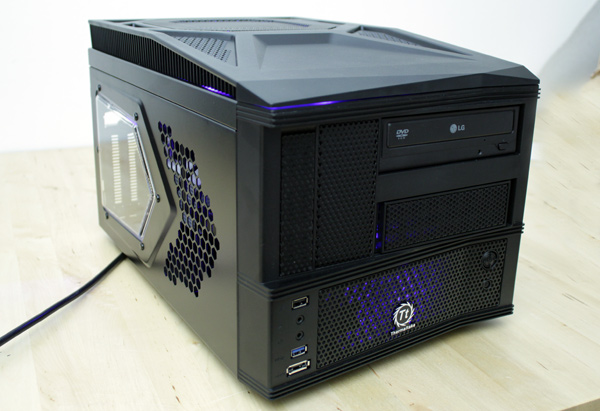
Gamers who are often on the move and visiting LAN parties should definitely check out the Armor A30 as despite being a small-form-factor case, it will easily take high-end components.
Thermaltake Armor A30 is a small computer case with very efficient design. In fact, we managed to strap it with AMD’s HD 6970 with no trouble at all, although the case will take graphics cards up to 350mm. CPU height must not exceed 90mm, but thankfully the market offers even shorter yet quiet and efficient CPU coolers.
The A30 will take micro-ATX and mini-ITX motherboards, but you should be careful with the motherboard design if you plan on using dual-slot graphics longer than 24cm. Such graphics cards must be placed in the first expansion slot on the motherboard, otherwise you’re in a pickle. Dual slot graphics cards shorter than 24cm will fit in any of the available expansion slots, except for the last one.
In-case airflow and cooling are pretty good and the fans are quiet.
The front panel has a USB 3.0 connector, which is pretty much the cherry on top. You can find the case priced at €80 here.
